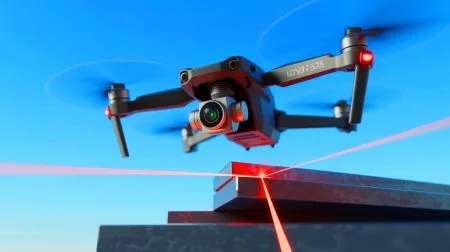| IN A NUTSHELL |
|
The pursuit of advanced navigation systems has taken a quantum leap with the development of a new type of atom interferometer by researchers at the University of Colorado Boulder (UC Boulder). This innovative device measures acceleration in three dimensions, a groundbreaking feat that propels navigation technology beyond its traditional confines. The implications of this advancement are vast, promising enhanced precision for spacecraft, submarines, and a variety of vehicles. By harnessing the unique properties of cooled rubidium atoms and leveraging quantum mechanics, this technology holds the potential to supersede aging electronic sensors, offering a durable and long-lasting alternative.
The Role and Function of Interferometers
An interferometer is a sophisticated instrument that has been pivotal in numerous scientific breakthroughs over the centuries. Its primary function is to split a beam of light into two separate paths, allowing them to travel different routes before recombining. This process enables scientists to observe differences in the interference patterns that emerge when the beams reconverge. Such discrepancies are indicative of the varying conditions, such as gravity or acceleration, encountered along each path.
Traditionally, interferometers have utilized light beams to perform these measurements. However, the team at UC Boulder has innovatively adapted this technology by employing atoms instead of light. This adaptation, known as an atom interferometer, leverages the quantum properties of atoms to achieve unprecedented precision. By deploying this method, researchers can now measure acceleration in three dimensions, a capability that was previously unattainable with conventional techniques.
Innovative Techniques and Quantum Mechanics
The groundbreaking work conducted by UC Boulder researchers involved cooling rubidium atoms to temperatures nearing absolute zero. At such low temperatures, the atoms enter a Bose-Einstein Condensate (BEC), a quantum state that allows them to exhibit wave-like behaviors. This state is crucial for the operation of the atom interferometer, as it facilitates the manipulation of atoms in a superposition state.
In this superposition state, the atoms exist in two places simultaneously. By utilizing lasers, the researchers were able to split the atoms into different paths, accelerating them before bringing them back together. This process results in a unique interaction pattern, akin to a thumbprint on glass, which provides critical data about the acceleration experienced by the atoms. Such innovative techniques underscore the profound impact of quantum mechanics on modern technology, particularly in the realm of navigation.
Building the Compact System
The construction of this pioneering device was no small feat. The entire setup, which includes six hair-thin lasers and tens of thousands of rubidium atoms, is remarkably compact, comparable in size to an air hockey table. Despite its small footprint, the system is highly sophisticated, incorporating 18 laser beams that traverse the vacuum chamber housing the atom cloud.
Researchers, including postdoctoral physicist Catie LeDesma, have emphasized the compactness and potential deployability of the experimental device. After dedicating three years to this project, the team has successfully integrated artificial intelligence (AI) to manage the complex tasks of laser manipulation and atom superposition. This integration of AI not only streamlines the process but also enhances the overall accuracy and efficiency of the system.
Future Implications and Potential
The current capabilities of the atom interferometer allow it to measure accelerations several thousand times smaller than Earth’s gravity. Although impressive, the research team is optimistic about further enhancing the device’s performance. This technological advancement could herald a new era for navigation systems, potentially revolutionizing how various modes of transportation and exploration are conducted.
The durability and longevity of atom-based devices present a stark contrast to conventional accelerometers, which age and require replacement over time. By eliminating this limitation, the atom interferometer offers a sustainable and reliable alternative, promising continuous and accurate measurements without degradation. As the team continues to refine this technology, the potential applications and benefits are boundless.
The development of this atom interferometer marks a significant milestone in the evolution of navigation technology. By transcending traditional limitations and embracing quantum mechanics, the UC Boulder team has set the stage for future innovations that could redefine precision and reliability in navigation. How will this cutting-edge technology shape the future of navigation and exploration across diverse industries?
Did you like it? 4.6/5 (20)








Wow, this sounds like science fiction becoming reality! How soon do you think this technology will be available for commercial use? 🤔
Finally, a navigation system that doesn’t rely on satellites! This could be a game-changer for areas with poor satellite coverage. 😊
Is there any risk involved with using rubidium atoms at such low temperatures?
Can this technology potentially replace GPS in the future?
The integration of AI is fascinating. How does it enhance the precision of the atom interferometer?
I’m skeptical about this tech. It sounds too good to be true! 🤨
How does the size of the device compare to existing navigation systems?
I’m excited to see how this will impact the aerospace industry!
Is the device energy-efficient given its reliance on lasers and AI?
How long do you think it will take for this technology to become mainstream?
Such a compact system! The future of navigation is here. 🚀